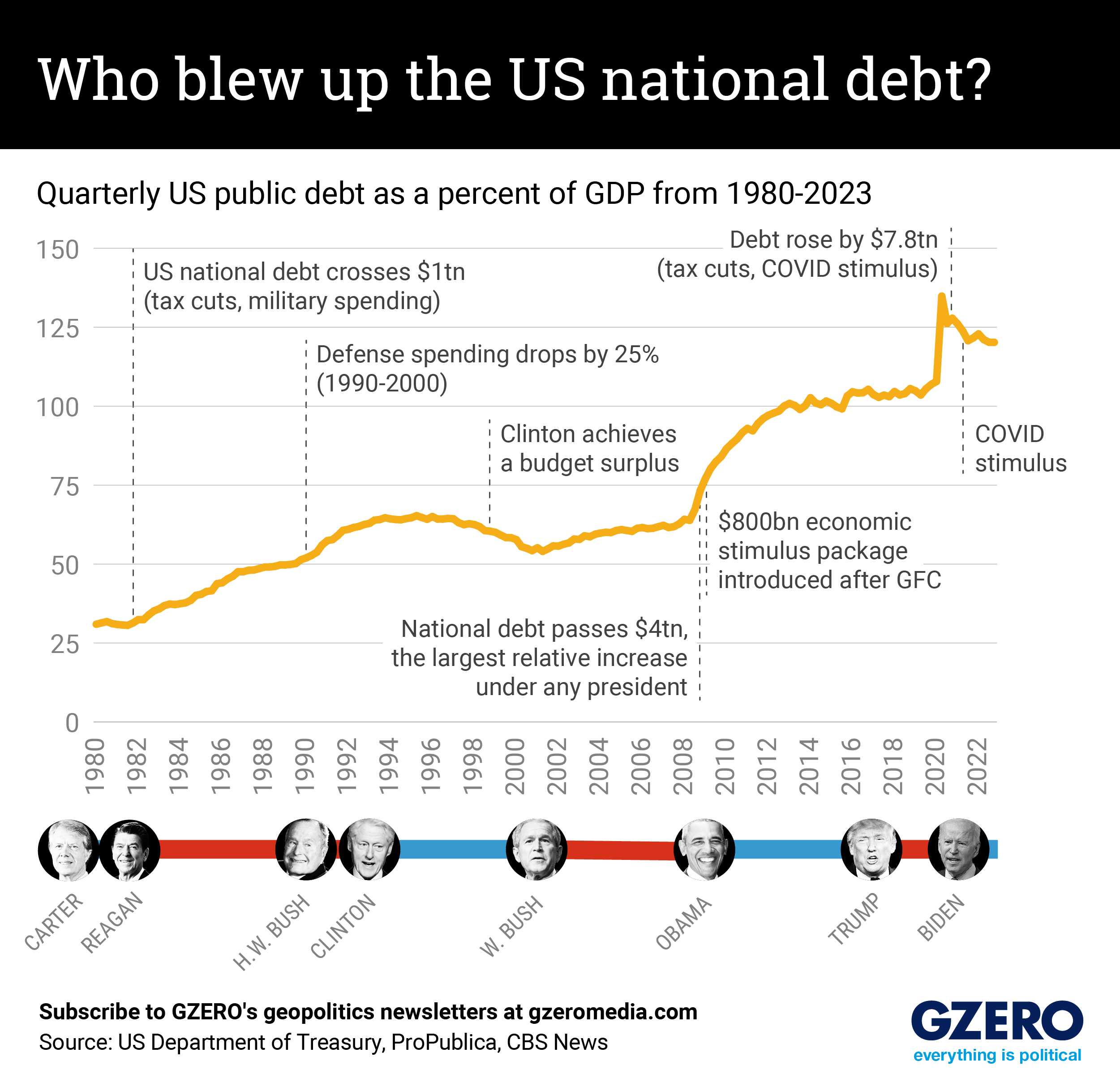May 29, 2023
On Saturday night, just days before the US government was set to run out of money, US President Joe Biden and House Speaker Kevin McCarthy reached an agreement to raise the debt ceiling. The deal is, as expected, a modest compromise that includes more spending cuts than Democrats were initially willing to make, but less than Republicans wanted.
In exchange for avoiding a catastrophic default and kicking the can down the road until Jan. 2025, the US government will keep nondefense spending almost flat in the 2024 fiscal year and increase it by only 1% the following year. The agreement will fully fund veterans care but nix unspent COVID money and claw back some IRS funding, expand (some) work requirements for SNAP beneficiaries, and fast-track environmental approvals for energy projects.
Now it only needs a thumbs-up from Congress this week. Despite opposition from progressives and the GOP's Freedom Caucus, the bill is expected to pass in the House and get overwhelming support in the Senate. But don't be surprised if we're having this conversation again right after the 2024 election.
Indeed, prior to the Biden-McCarthy deal, there was plenty of finger-pointing over who was to blame for the US creep toward fiscal purgatory. Democrats blamed Republicans for refusing to raise the debt ceiling without preconditions, while Republicans said that Dems’ overspending landed the country in this mess in the first place.
But a look at US federal debt compared to GDP over the past four decades – which highlights America’s ability to pay back its debt – shows that both Democratic and Republican spending and fiscal policies have fueled the country’s current imbalance. We look at these figures dating back to 1980.
From Your Site Articles
More For You
Most Popular
Fishing boats moored at Taganga Beach, as fishermen express concern over unclear US government videos showing strikes on vessels during anti-narcotics operations, amid fears that those targeted may have been fishermen rather than drug traffickers, in Santa Marta, Colombia, on October 20, 2025.
REUTERS/Tomas Diaz
Walmart’s $350 billion commitment to American manufacturing means two-thirds of the products we buy come straight from our backyard to yours. From New Jersey hot sauce to grills made in Tennessee, Walmart is stocking the shelves with products rooted in local communities. The impact? Over 750,000 American jobs - putting more people to work and keeping communities strong. Learn more here.
© 2025 GZERO Media. All Rights Reserved | A Eurasia Group media company.
